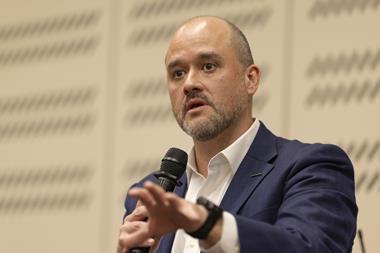
The automotive sector is changing. According to a recent report by PWC, analysts believe the sector will change more in the next ten years than it has in the last 100. The biggest factor contributing to this rapid evolution is the convergence of the automotive and technology sectors, something that DHL dubbed ‘The Quiet Revolution’ in its recent white paper entitled Revolution: Convergence and the future of the automotive supply chain.
In summary, the quiet revolution suggests that two related trends – the rise of the global mega-supplier and the convergence of the high-tech and automotive industries – are powering a transformation of the automotive industry.
In light of this paper, let us consider the effect of the quiet revolution, and in particular the convergence revolution, on two specific aspects of the automotive supply chain: the effect in-car technology is having on inbound to manufacturing (I2M) operations; and the impact of the quiet revolution on aftermarket services.
I2M operations on the assembly lineLook at the effect that an increase of in-car technology is having on the assembly line. As the automotive and tech sectors continue to converge, drivers no longer just want a vehicle that will get them from A to B. Instead, they want an automotive experience, one suited to their personal needs that incorporates technologies such as TV sets to keep children entertained when on the move, parking sensors and assists to enhance safety and even wifi to stay connected while travelling. For OEMs and supply chain partners, this not only means an increase in different parts on the production line and throughout the supply chain but also the methods and handling of tech parts as opposed to the traditional parts such as knobs and dials.
Drivers’ desire for in-car tech and a more personal experience is one of the factors causing manufacturers and tier suppliers to move to a more complex “inbound to manufacturing” type operation. With manufacturers increasingly assembling more models and variants down the same line, parts need to be tightly coordinated and sequenced so that they arrive at the precise moment they are needed on the production line. With so many, and such varied parts now required, “just-in-sequence” is the next step from implementing the “just-in-time” method for feeding parts into production.
Managing inventory in this way makes for a more efficient, faster and often safer production line. Operating so that parts arrive at the moment they’re needed means they can be easily slotted into their place on the production line. Storage on site can be reduced, increasing safety for employees and saving costs. Supply chain providers tackle the complexity behind the scenes as manufacturers are increasingly moving towards this way of working to ensure they’re future fit.
Aftermarket implicationsThe increase in the volume and variety of parts caused by the increase in technology in vehicles is felt throughout the supply chain, including in aftermarket operations. As the technology and automotive sectors continue to converge, aftermarket service is affected in another important way: by data. This leads to my second point: the effect that self-diagnosing vehicles will have on aftermarket operations.
Put simply, self-diagnosing vehicles assess their own state of health. They can update dealerships when repairs are required and transmit data about any faults or issues to manufacturers ahead of time. This makes it easier for manufacturers and dealers to forecast stock. If they know, for example, that three cars will be returned within a week for repairs to their engines, it is easy for them to order in new parts and have them waiting for the drivers on their arrival at the dealership. As Sean Bricknell, global logistics strategic planner at General Motors commented: “Once you have visibility of data, you can manage [inventory] more effectively.”
Bricknell is right. Data leads to a wealth of knowledge that enables automotive businesses to run their operations more effectively and meet customer demand. With regards to aftermarket operations, increased access to data and the advent of self-diagnosing vehicles is of great benefit to the industry.
The technology sector is extremely agile and the automotive industry must learn from this as the two sectors continue to converge, resulting in rapid and significant changes to products and operations.
Manufacturers will need to be prepared to adapt production lines to increase efficiency and manage a more diverse range of parts, caused by drivers’ desire for an immersive automotive experience and greater personalisation. Supply chain providers must manage the increasing complexity that these challenges bring. Dealerships should take advantage of all the data at their disposal to develop not just a proactive operational model but a predictive one.
To achieve this, it is crucial for automotive manufacturers to work closely with their supply chain partners. Together, they can prepare for a future where the automotive and technology sectors become one.
Bill Bacon is managing director of automotive at DHL Supply Chain UK & Ireland

































